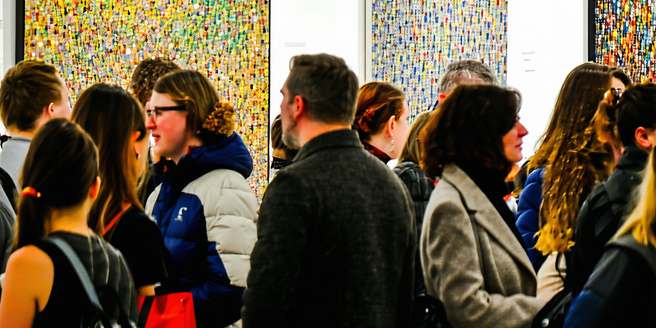Innovative Contest Entry Methods

Understanding the Importance of Creativity in Contests
| Aspect | Description | Impact |
| Originality | Inspiring unique thoughts | Differentiates entries |
| Innovation | Incorporating new ideas | Enhances participant engagement |
| Expression | Showcasing personal style | Adds authenticity |
| Challenge | Problem-solving through creativity | Stimulates intellectual growth |
| Impact | Creating lasting impressions | Increases contest appeal |
Exploring Digital Platforms for Contest Submissions
In today’s technology-driven world, digital platforms have effectively transformed the way contests are conducted, offering innovators a seamless way to submit their entries. Not only do these platforms eliminate geographical barriers, they also provide a structured framework, making it easier for participants to present their ideas efficiently. Utilizing digital tools helps in streamlining the submission process, allowing judges to receive and evaluate entries with greater ease and speed. Moreover, digital submissions can accommodate a wide variety of formats, including text, images, videos, and other multimedia files, thus encouraging diversity in presentation styles. Emphasizing equitable access and convenience, digital platforms pave the way for everyone to partake in contests without logistical constraints. By integrating with popular software and applications, these platforms empower participants to creatively engage while exploring the full potential of tech advancements.
Utilizing Video and Multimedia for Unique Entries
Video and multimedia have emerged as powerful tools for creating distinctive contest entries that capture attention and convey complex ideas effectively. By incorporating video, participants can tell compelling stories, present dynamic demonstrations, and utilize visual elements that enhance traditional communication methods. Multimedia allows entrants to blend various content types such as audio, animations, and interactive components to provide an immersive experience. This opens up tremendous possibilities for expression, enabling participants to reach new levels of creativity and innovation. Furthermore, these formats cater to different learning styles and preferences, appealing to a diverse audience. Videos and multimedia entries can be both emotive and informative, making them a formidable tool to communicate passion and originality. As digital consumption of video content continues to rise, participants leveraging video in their submissions can significantly impact audiences and judges alike, leaving a memorable impression.
Leveraging Social Media to Amplify Contest Participation
Social media is an indispensable tool in amplifying contest participation, serving as both a promotional and engagement platform. Its widespread reach allows contests to capture the attention of diverse audiences, encouraging broader involvement. Through targeted campaigns and viral challenges, social media can generate buzz and foster excitement among potential participants. By providing a space for dialogue and feedback, it aids in cultivating a community around the contest. Participants and organizers alike benefit from enhanced visibility and sharing capabilities, which enable the dissemination of valuable information. Moreover, social media platforms can serve as an extended referral network, encouraging peer outreach and facilitating user-generated content. With algorithms constantly adapting to user behavior, contests can leverage data-driven insights to refine their outreach strategies, ensuring they resonate with the desired demographic. As an evolving tool of communication, social media’s influence in contests ensures connection and interactivity at unprecedented scales.
Incorporating Augmented Reality in Entry Presentations
Augmented reality (AR) provides an innovative frontier for contest entries, blending digital images and information with real-world surroundings for an enhanced user experience. By incorporating AR into presentations, participants can create immersive environments that captivate and engage audiences in groundbreaking ways. This technology allows users to interact with digital objects in a real-world context, turning abstract concepts into tangible experiences. For contests, AR can elevate storytelling and showcase complex designs with an unprecedented degree of realism and interactivity. The ability to provide 3D models or simulations offers judges deeper insights, potentially revolutionizing evaluation processes. Furthermore, as AR-equipped devices become more accessible, the integration of augmented reality into submissions signifies a push towards embracing cutting-edge technology and staying ahead of trends. Participants employing AR can thereby scale creative boundaries while offering distinctive, memorable presentations in the competitive contest landscape.
The Role of Gamification in Engaging Contest Participants
Gamification, the application of game-design elements in non-game contexts, can significantly enhance engagement in contests by injecting elements of fun, challenge, and reward. By turning participation into a playful experience, gamification encourages continuous interaction and boosts motivation. Elements such as leaderboards, badges, and levels can foster a sense of competition and accomplishment, driving participants to invest more effort and creativity into their entries. Additionally, integrating storytelling, progress tracking, and rewards can make the experience more immersive and satisfying. Gamification can also facilitate learning and skill development, providing participants with feedback and insights to refine their strategies. It harnesses psychological triggers, such as curiosity and the desire for improvement, to create a rewarding feedback loop. By tapping into these dynamics, contests can cultivate a more vibrant and active community, ultimately leading to enhanced quality of submissions and participant retention.
Benefits of Interactive Entry Forms for Participants
Interactive entry forms offer numerous advantages for participants by transforming mundane submission procedures into engaging experiences. These forms encourage active involvement by incorporating dynamic elements such as dropdown menus, sliders, and responsive fields, which guide users through the process seamlessly. The use of conditional logic can tailor the form’s complexity to the participant’s specific needs, ensuring a personalized and efficient submission experience. Moreover, interactive forms can provide instant feedback and guidelines, ensuring clarity and reducing errors in submission details. This accessibility fosters an inclusive environment, catering to individuals with diverse abilities and technological literacy. Participants benefit from real-time progress indicators and validation checks, preventing information loss and enhancing the overall completion rate. By simplifying and enhancing the entry process, interactive forms empower participants to articulate their ideas more effectively, ultimately leading to richer contest experiences and higher participant satisfaction.
Using Blockchain for Secure and Transparent Submissions
Blockchain technology offers a robust solution for managing contest submissions with unparalleled security and transparency. By utilizing a decentralized ledger system, blockchain ensures that all entries are immutable and verifiable, preventing unauthorized alterations and guaranteeing authenticity. This enhances trust among participants, organizers, and judges, as the technology provides a transparent and accessible record of all submitted entries. By eliminating the potential for manipulation and fraud, blockchain fosters fair competition, ensuring the integrity of the contest process. Additionally, smart contracts can automate administrative tasks, streamlining operations and minimizing human error. Privacy concerns are also addressed, as blockchain can securely handle sensitive information through cryptographic techniques, maintaining confidentiality. By adopting blockchain, contests can offer participants peace of mind and foster a reputation for reliability and fairness, paving the way for the future of digital competitions.
Integrating AI to Personalize Contest Entry Experiences
Artificial intelligence (AI) is revolutionizing contest entry experiences by offering personalized and adaptive interactions for each participant. Through AI-powered algorithms, contest platforms can analyze user data to provide tailored recommendations and insights, significantly enhancing the user journey. By anticipating participant preferences and behaviors, AI can suggest relevant content, resources, and even style improvements, guiding contestants toward more polished submissions. Personalization extends to communication, with AI facilitating automated yet customized engagement through chatbots and email updates. Adaptive learning paths allow participants to receive feedback and educational material suited to their skill level, fostering a supportive environment. By leveraging AI, contests not only improve participant satisfaction but also enable a richer, more inclusive competition, where diverse talents can thrive and be appreciated. Embracing AI-driven personalization signals a commitment to innovation and participant-focused contest ecosystems.
Sustainability and Eco-Friendly Contest Submission Methods
Incorporating sustainability into contest submission methods highlights the growing awareness and commitment to environmental responsibility. Digital entries eliminate the need for paper, reducing waste and lowering the ecological footprint of contests. By encouraging virtual submissions and reducing reliance on physical materials, contests can significantly cut down on emissions associated with transportation and logistics. This shift promotes conscientious consumption and resource management, aligning with broader environmental goals. Green practices extend to hosting online events, which negate the ecological impact of large physical gatherings. Participants are inspired to consider sustainability in their creative processes, fostering innovation and responsibility. By integrating eco-friendly methods, contests can appeal to a more socially conscious audience, reinforcing the idea that creativity and environmental stewardship can coexist. Emphasizing sustainability enhances a contest’s brand reputation, showcasing dedication to positive change and setting a precedent for future initiatives.
